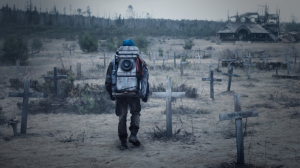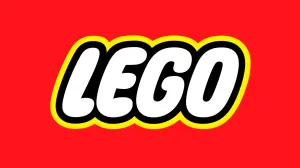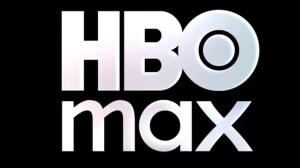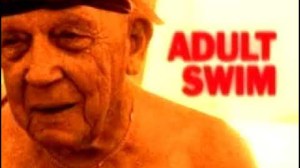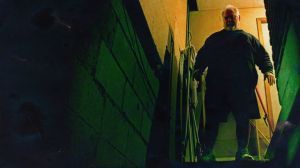Earlier this month, DC released the first six pages of Doomsday Clock #1, and there is a lot to unpack.
Videos by ComicBook.com
Writer Geoff Johns has said that he and artist Gary Frank can spend hours poring over a single panel, and that effort shows in what has been released so far: the six pages made available to fans at New York Comic Con are packed with content, plot, dialogue, meaning, and politics.
So much so, in fact, that when we sat down to try and break down the first six pages, we found that 2,000 words in, we had just barely finished writing about the first page.
You can check out our deep dive into the first page of the miniseries here, and the second page here. Here is our look at the third.
For starters: This is the only page of the ashcan that does not mirror the layout of Watchmen #1. Indeed, a cursory look through Watchmen did not yield any page that has this identical layout in the miniseries.
Since the identical-reveerse layouts have always been interpreted as Rorschach-inspired, what does it tell us that this one does not have them? Certainly his absence is felt here, as this is the first (but not only) page of the ashcan with no narration from Rorschach.
Let’s get moving through the page — and let us know if we (somehow) missed something at @comicbook!
Panel 1
What we see here is confirmation of what had been hinted at previously: Adrian Veldt is under siege because the world has discovered the truth about the end of Watchmen.
There is a lot of loaded language here, which may feel familiar to those following current events. The Russian government has a different version of events than everyone else, and there are mentions of collusion and “The President and his Cabinet were willing participants.” This may or may not be intentional allusions to U.S. President Donald Trump’s election-tampering scandal involving Russian operatives, but it will feel that way regardless.
Like the fountain in the lobby, it is hardly an “Easter egg” to say that this is Ozymandias’s office, which has been seen periodically throughout Watchmen, but it is worth at least mentioning for context.
If the government asserts that Veidt’s apprehension and conviction will help to stabilize the world — Ozymandias’s stated goal all along — why would he not turn himself over? What is his endgame this time?

Panel 2
The President was “elected on a campaign promising the capture” of Ozymandias. This is, as mentioned in our previous piece, an interesting piece of the Doomsday Clock puzzle.
Exactly how long has the world known about Ozymandias’s actions, that it could have swung the Presidential campaign, but still be fresh enough that the world is reacting to it so decidedly and Americans are just now rioting at Veidt’s companies?
The panel does not refer to the President as being re-elected, which would on the face of it suggest that the November 1992 election was when the President was elected — but unless he was re-elected, the President would not yet be the President, merely the President-Elect, in late November 1992, as the 1992 election would have resulted in a President who was inaugurated in January 1993.
It is possible that, given the changes made to electoral law by Nixon in the world of Watchmen, 1992 was not an election year in this world.

Panel 3
There is not much here in terms of content; panels 3 and 4 are largely a plot dump, and panel 4 in particular is all information previously covered in Watchmen.
That said, the chair is at an 11 o’clock angle, like so many items in the series.
That it is a chair is interesting since it was Metron’s chair, hanging empty suspended in midair after something that seems likely to be Doctor Manhattan killed Owlman, that first called our attention to the recurring pattern of Doomsday Clocks in DC’s Rebirth stories.

Panel 4
text
In the world of Watchmen, the New York Gazette is the newspaper of record. While the New York Times does exist, and appeared in Watchmen a couple of times, the Gazette was the primary source of straight, non-tabloid news depicted in the series.
That headline, then — “The Great Lie” — indicates that the angry crowds and political to-dos around Ozymandias are not just coming from fringe or conspiracy news and the like. No, Ozymandias’s crimes have been exposed on the broadest possible stage and there is no hiding from it.
The shot of Veidt’s desk is a visual nod to Watchmen #1, page 18, in which Veidt had a newspaper and Ozymandias action figures on his desk as he looked out on the skyline very similar to the one seen in panel one here.
Veidt was almost always depicted as torturing himself by subjecting himself to the bad news of the world, with almost no scenes set in the present day and featuring Veidt where he was not watching, reading, or otherwise interacting with the news or journalists.
An indication that there is an investigation into who else might have been involved with Veidt’s “bizarre ruse” is likely bad news for Dan Dreiberg and Laurie Juspeczyk, who went helped to cover up Veidt’s plans, or at least did not come forward to reveal them, once it was clear that he had “won” and the attack on New York had been successful.

Panel 5
During his panel at New York Comic Con, Geoff Johns noted how pleased he was with the frozen palm trees in this panel.
Those palm trees were growing at Ozymandias’s frozen hideaway, until Ozymandias allowed the elements to swallow much of it up in order to tie up loose ends left behind by his scheme in Watchmen‘s final act.
The men in snow gear descending on the hideaway callls back to the visual of Nite Owl and Rorschach, bundled up in their snow gear to try and stop the attack on New York.
This panel also confirms that the authorities are interested in finding out what happened to Nite Owl, Rorschach, Silk Spectre, and Doctor Manhattan.
Rorschach is listed here as being “long inactive,” which both indicates there is no confirmation that he was considered dead, and that when he reappears later in the ashcan (spoilers?), it is a surprise to everyone, not just the reader.
That Rorschach’s journal was stolen after having been recovered and deciphered is an interesting element: who would have stolen it, and why? We have seen the journal on the variant cover to Doomsday Clock #3, in the hands of Batman…!



